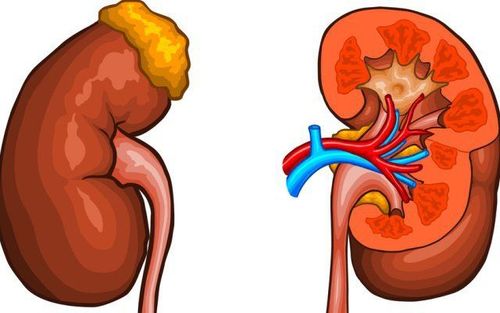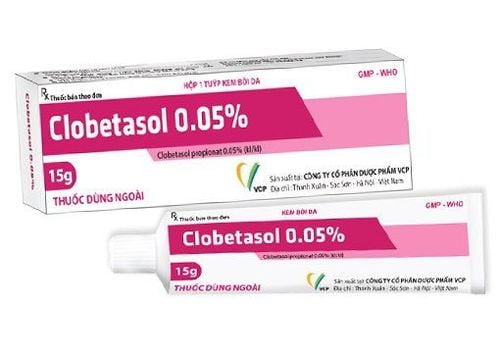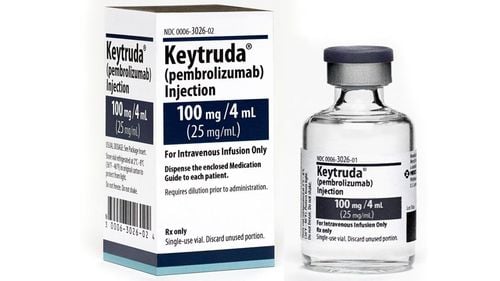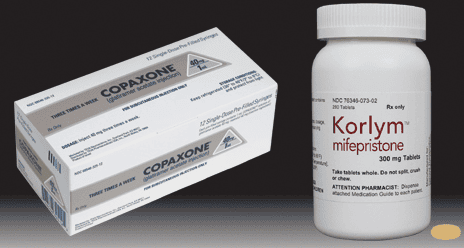This is an automatically translated article.
Mitotane is also known by its common name Lysodren. Mitotane/Lysodren is a steroidogenesis inhibitor used as an antineoplastic agent used in the treatment of adrenocortical carcinoma and Cushing's syndrome.
1. Uses of Mitotane
Mitotane or Lysodren works by killing or slowing the growth of cancer cells. Mitotane is prescribed by doctors to use in the following cases:Treatment of cancer of the adrenal gland (the adrenal gland is responsible for producing hormones necessary for the body to maintain normal function). Mitotane works to kill or slow down the growth of adrenal cells and change the side effects caused by overproduction of hormones. Adrenal cortical carcinoma that is advanced, unresectable, metastatic, or recurrent. Management of Cushing's syndrome secondary to pituitary dysfunction. Mitotane is also used alone or in combination with Metyrapone or Aminoglutethimide for the treatment of Cushing's syndrome secondary to non-adrenal carcinoma.
2. Dosage and usage
2.1. Dosage For adults adjunctive treatment for advanced adrenocortical carcinoma:
Initial dose is from 2-6g/day divided into 3 to 4 doses, gradually increasing until mitotane concentration in plasma reached the therapeutic threshold of 14 - 20 mg/L. In the case of patients requiring urgent control of symptoms of Cushing's syndrome, a higher starting dose of 4-6 g per day may be used and increased gradually over the course of use. Maintenance dose used orally 9-10g/day divided into 3 to 4 doses. Dosage is adjusted based on the plasma concentration of mitotane and the body's tolerance to the drug, until the plasma concentration of Mitotane is set at 14-20 mg/L to ensure safety. Plasma concentrations in the body should be regularly monitored and evaluated after each dose adjustment, especially in the case of high doses used in the first place. Increase dose to use 16g/day if the patient's condition can respond. The highest dose should only be used from 18-19g/day. In case of mild toxicity, the doctor will reduce the dose until the maximum tolerated dose is reached. In case of serious side effects such as neurotoxicity, the correction with Mitotane should be discontinued. For patients with secondary Cushing's syndrome:
Initial dose: 3 - 6 g per day divided 3-4 times. Maintenance dose: 500 mg twice/week to 2 g daily. Up to 12g per day. For children:
Detailed medical advice is required. Usually the first dose of application will be 1.5 to 3.5 g/m2/day, this dose can be reduced in 2 to 3 months of use depending on the plasma concentration in the body. 2.2. How to use Mitotane (Lysodren®) Take the drug 3 to 4 times a day or as directed by your doctor. In order to use the drug correctly and most effectively as well as adjust the dose to suit each patient's condition, Mitotane is recommended to be used for hospitalized patients rather than for patients to buy and use at home.
Do not use the drug at a high, low dose or for a longer time than indicated.
In case of emergency with drug reactions or overdose, please contact the nearest medical facility for timely support.
3. Notes when using Mitotane
If the patient has signs of adrenal insufficiency, steroid replacement therapy will be indicated instead, because Mitotane can increase the concentration of steroid-binding protein in the blood plasma. If the patient has a serious injury or infection, the doctor should be informed immediately. The drug should be discontinued because it causes adrenal suppression. Mitotane can cause liver damage and autoimmune hepatitis, so users need to monitor and periodically check liver function, especially at the beginning of treatment or when increasing the dose of the drug. In obese patients, careful monitoring of plasma mitotane concentrations is required because adipose tissue acts as a reservoir for mitotane, resulting in longer absorption of mitotane by the body and possible accumulation of the drug in the body. body. Using Mitotane for too long can result in decreased liver function and brain damage. Therefore, patients need to be examined and evaluated for behavior and neurological function regularly, especially when the drug concentration in the blood exceeds 20 mg/L. When using the drug, women may experience some side effects related to gynecological diseases such as pelvic pain or bleeding. Before using the drug, you should tell your doctor when:
The user is pregnant or breastfeeding. Cases need to be consulted by a doctor and use drugs as prescribed. Are allergic to any ingredient in mitotane. Illnesses, especially liver disease
4. Drug interactions
Mitotane may change the way other medicines work or increase side effects. So to avoid drug interactions, tell your doctor about all the medicines you are using including prescription drugs, over-the-counter drugs, dietary supplements, especially anticoagulants, sleeping pills. , sedatives, antidepressants, laxatives, diuretics such as Furosemide, Spironolactone, anticonvulsants, muscle relaxants, narcotic pain relievers...
5. Side effects of drugs
Some side effects occur with high frequency such as:
Increased liver enzymes, increased blood triglycerides, increased cholesterol; Prolonged bleeding, decreased white blood cell count; Dizziness, drowsiness, weakness; Nausea, vomiting, causing digestive diseases such as diarrhea, epigastric discomfort; Skin rash; Adrenal failure. Some common reactions:
Natural hepatitis; Anemia, cognitive impairment, movement disorders, headache and dizziness. Uncommon side effects
Hypothyroidism; Lower or higher blood pressure; High fever, body aches; Damaged liver; Meet urinary tract-related diseases such as cystitis, blood in urine. Mitotane is used to treat adrenocortical carcinoma and Cushing's syndrome. To use Mitotane safely and effectively, patients need to take it exactly as prescribed by their doctor.
Please dial HOTLINE for more information or register for an appointment HERE. Download MyVinmec app to make appointments faster and to manage your bookings easily.













